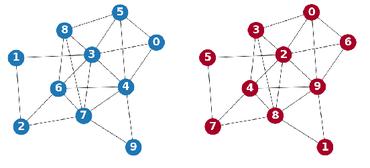Search Results for author: Qiyuan Wang
Found 11 papers, 4 papers with code
WeakSurg: Weakly supervised surgical instrument segmentation using temporal equivariance and semantic continuity
no code implementations • 14 Mar 2024 • Qiyuan Wang, Yanzhe Liu, Shang Zhao, Rong Liu, S. Kevin Zhou
Weakly supervised surgical instrument segmentation with only instrument presence labels has been rarely explored in surgical domain.
S^2MVTC: a Simple yet Efficient Scalable Multi-View Tensor Clustering
1 code implementation • 14 Mar 2024 • Zhen Long, Qiyuan Wang, Yazhou Ren, Yipeng Liu, Ce Zhu
Specifically, we first construct the embedding feature tensor by stacking the embedding features of different views into a tensor and rotating it.
MURPHY: Relations Matter in Surgical Workflow Analysis
no code implementations • 24 Dec 2022 • Shang Zhao, Yanzhe Liu, Qiyuan Wang, Dai Sun, Rong Liu, S. Kevin Zhou
Autonomous robotic surgery has advanced significantly based on analysis of visual and temporal cues in surgical workflow, but relational cues from domain knowledge remain under investigation.
MM-PCQA: Multi-Modal Learning for No-reference Point Cloud Quality Assessment
1 code implementation • 1 Sep 2022 • ZiCheng Zhang, Wei Sun, Xiongkuo Min, Quan Zhou, Jun He, Qiyuan Wang, Guangtao Zhai
In specific, we split the point clouds into sub-models to represent local geometry distortions such as point shift and down-sampling.
 Ranked #1 on
Point Cloud Quality Assessment
on SJTU-PCQA
Ranked #1 on
Point Cloud Quality Assessment
on SJTU-PCQA
Deep Neural Network for Blind Visual Quality Assessment of 4K Content
no code implementations • 9 Jun 2022 • Wei Lu, Wei Sun, Xiongkuo Min, Wenhan Zhu, Quan Zhou, Jun He, Qiyuan Wang, ZiCheng Zhang, Tao Wang, Guangtao Zhai
In this paper, we propose a deep learning-based BIQA model for 4K content, which on one hand can recognize true and pseudo 4K content and on the other hand can evaluate their perceptual visual quality.
AsyncFedED: Asynchronous Federated Learning with Euclidean Distance based Adaptive Weight Aggregation
1 code implementation • 27 May 2022 • Qiyuan Wang, Qianqian Yang, Shibo He, Zhiguo Shi, Jiming Chen
In an asynchronous federated learning framework, the server updates the global model once it receives an update from a client instead of waiting for all the updates to arrive as in the synchronous setting.
Recovering medical images from CT film photos
no code implementations • 10 Mar 2022 • Quan Quan, Qiyuan Wang, Yuanqi Du, Liu Li, S. Kevin Zhou
While medical images such as computed tomography (CT) are stored in DICOM format in hospital PACS, it is still quite routine in many countries to print a film as a transferable medium for the purposes of self-storage and secondary consultation.
3D endoscopic depth estimation using 3D surface-aware constraints
no code implementations • 4 Mar 2022 • Shang Zhao, Ce Wang, Qiyuan Wang, Yanzhe Liu, S Kevin Zhou
We propose a loss function for depth estimation that integrates the surface-aware constraints, leading to a faster and better convergence with the valid information from spatial information.
Clustering Enabled Few-Shot Load Forecasting
no code implementations • 16 Feb 2022 • Qiyuan Wang, Zhihui Chen, Chenye Wu
While the advanced machine learning algorithms are effective in load forecasting, they often suffer from low data utilization, and hence their superior performance relies on massive datasets.
CT Film Recovery via Disentangling Geometric Deformation and Illumination Variation: Simulated Datasets and Deep Models
no code implementations • 17 Dec 2020 • Quan Quan, Qiyuan Wang, Liu Li, Yuanqi Du, S. Kevin Zhou
We also record all accompanying information related to the geometric deformation (such as 3D coordinate, depth, normal, and UV maps) and illumination variation (such as albedo map).
AbdomenCT-1K: Is Abdominal Organ Segmentation A Solved Problem?
1 code implementation • 28 Oct 2020 • Jun Ma, Yao Zhang, Song Gu, Cheng Zhu, Cheng Ge, Yichi Zhang, Xingle An, Congcong Wang, Qiyuan Wang, Xin Liu, Shucheng Cao, Qi Zhang, Shangqing Liu, Yunpeng Wang, Yuhui Li, Jian He, Xiaoping Yang
With the unprecedented developments in deep learning, automatic segmentation of main abdominal organs seems to be a solved problem as state-of-the-art (SOTA) methods have achieved comparable results with inter-rater variability on many benchmark datasets.






